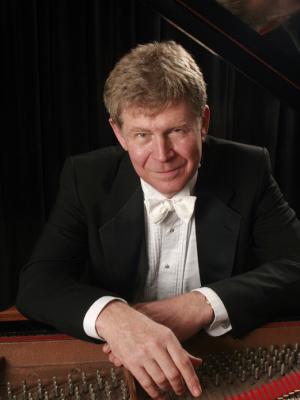Hobson launches Schumann series with a late curiosity and an early masterpiece

The journey of a thousand music pages begins with a single step.
Pianist Ian Hobson took that step Wednesday night with a solo recital at Subculture, the subterranean performance club on Bleecker Street, where over the next three years Hobson and friends plan to perform everything Robert Schumann ever wrote for piano solo or for chamber ensembles that include a piano.
There aren’t any Schumann landmark dates coming up, unless you count his 210th birthday this June. Apparently this project just seemed like something worth doing, and why not now?
“A thousand pages” is just a figure of speech. In reality, it’s probably closer to five thousand. During the decade of the 1830s, Schumann composed nothing but solo piano music. When the mood was on him, he popped pieces out at the rate of two or three a day.
Finally, his wife Clara persuaded him to compose something else. In 1842, his famous “year of chamber music,” he started off with three string quartets. Thereafter, everything had a piano in it—trios, sonatas, quartet, quintet, character piece cycles, 17 large chamber works in all before his death in 1856, at age 46.
If Hobson and friends pull it off, it will have been a journey indeed.
For that first step on Wednesday, Hobson picked not Schumann’s Op. 1 or a familiar favorite, but the Fantasiestücke (Fantasy Pieces), Op. 111, one of the composer’s most ear-challenging late works. This daring choice didn’t quite pay off, as the pianist, perhaps not fully warmed up yet, couldn’t prevent the first piece’s thick, swirling textures from sounding like a muddle. His timing and rubato showed sensitivity, but his monochromatic tone made one more aware of hammers and strings in a box than of music in the air.
That box, it must be said, was on the small side, what used to be called a “living-room grand.” Proudly wearing its Steinway & Sons logo on the audience side, the mid-sized piano looked about right for the intimate club’s tiny stage, but at about three feet shorter than a concert grand it surely had limitations for depth of tone and breadth of color palette.
The set’s other two pieces, one songful in A-flat major, the other rough and ready in C minor, came across more clearly, and the pianist made the effort to bring out melodic threads in the inner voices. But one wished it hadn’t sounded quite so much like an effort.
With the eight pieces of Op. 12, also titled Fantasiestücke, one was on more familiar ground, with the young Schumann pouring out musical ideas in profusion and somehow sweeping them together into compositions that defy analysis but make a sort of subjective sense.
The key to interpreting them is catching the wave of Schumann’s imagination, as if plucking the tunes and mood shifts and wild modulations out of the air. Hobson had the agility to keep up with Schumann technically, but rarely sounded spontaneous, whether in the dreamy opening “Des Abends” (In the Evening) or in the aptly titled “Grillen” (Whims), with its swerves between marcato and legato touch. With the pianist’s rather brittle, objective tone, it felt as if one was outside Schumann’s world looking in, and so the soft close of the last piece, “Ende vom Lied” (End of the Song), didn’t exert its nostalgic tug.
It was in the program’s closing piece, the great Fantasia in C major, Op. 17, that one felt Hobson fully inhabiting the music, driving it with surging emotion and pulling back to reflect. Some limitations of tone and touch remained, but the fervent first movement had sing in the dialogue between the hands and a soulful hush in the pianissimo.
One wished for deeper tone and more sweep in the triumphant march movement, but the limitations of the smaller instrument may have also played a role there. Hobson met all the music’s considerable technical demands, at least until the notorious fast skips at the end, which he managed by broadening the tempo.
The slow, deeply nostalgic closing movement is all shifting moods and colors, and this was not a night for many of those. But one sensed Hobson’s understanding of the ebb and flow of this exquisite music, as he played with freedom and sensitive timing.
The thought crossed one’s mind that this gentle masterwork would have made a superb epilogue to the entire Schumann series. And might still, if the pianist cares to encore it two and a half years from now.
Speaking of encores, Hobson favored Wednesday’s audience with a pearly performance of another gentle piece, Chopin’s Etude in A-flat Major, Op. 25, No. 1, which received its enduring nickname, “Aeolian Harp,” from Robert Schumann.
Ian Hobson performs a solo recital of Schumann’s Intermezzi, Op. 4; Faschingsschwank aus Wien, Op. 26; Papillons, Op. 2; and Carnaval, Op. 9, 7:30 p.m. March 18 at Subculture. subculturenewyork.com; 212-533-5470.






